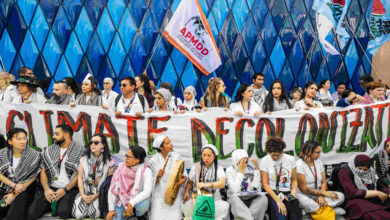On Oct. 8, Pacific Gas & Electric company shut off power to 800,000 people across Northern California. In anticipation of fierce winds that could knock down power lines and potentially cause wildfires, the company is turning off our power. The company has so mismanaged this decision that their website was subject to multiple crashes throughout the day as people tried to find out whether they would be affected.
Meanwhile, according the MarketWatch.com, “Shares of PG&E Corp. were slammed on Oct. 10, as the second day of power cuts left more than 1.5 million people in the northern part of the state in the dark, with a victory for bondholders in a bankruptcy ruling adding to the downdraft.”
The company is currently in Chapter 11 bankruptcy proceedings stemming from the huge liabilities it faces owing to last year’s devastating fires. The bondholder group is led by a hedge fund run by billionaire Paul Singer, and the ruling could cause holders of PG&E common shares to lose most of their remaining equity in the company while Singer and his fund stand to gain billions.
PG&E bosses are not turning off the power because they are concerned about the people or the environment in the event of a wildfire. They are turning it off because it’s the most cost-effective way to avoid disasters they’ve caused before because of profit-driven negligence.
PG&E’s power lines caused the most deadly wildfire in the history of California. In 2018, fires in Butte County killed more than 85 people and burned more than 150,000 acres. Now, the company is pre-emptively shutting off power to hundreds of thousands of people because they don’t want to spend the money to clear vegetation properly or secure power lines below ground. Their cost-cutting means regular people will suffer.
Because PG&E is a privately owned utility, it’s decisions are solely made on the basis of what its corporate leadership believes will boost profits. They aren’t worried about the fact that people need power to cook, refrigerate food, use live-saving machines, and so much more. They are worried about how to cut costs, charge as much as possible, and keep the profits rolling in.
Investigations following a deadly blast in San Bruno in 2010 revealed company practices that prioritized revenue and corporate incentives over safety. According to a 2012 California Public Utilities Commission report, PG&E cut back on pipeline-replacement projects and maintenance, laid off workers, used less effective inspection techniques, and engaged in other cost-cutting measures to reduce pipeline safety and maintenance. This was all during a period of increased profits.
Where did the money go? Between 2007 and 2010, the company spent a yearly $56 million on an incentive plan for executives and non-employee directors. PG&E’s past practice is to undermine safety and service to make sure their wealthy executives and shareholders make profits. There’s no indication that practice has changed.
PG&E also makes customers pay for the maintenance and safety that should be common practice. Following the San Bruno disaster and investigation findings, PG&E launched a $2.2 billion upgrade project the vast majority of which was paid for by rate increases. Only 10 percent was covered by company investors.
The most recent decision to cut power to thousands of people across 34 counties because of weather reports of high winds is yet another result of a consistent approach viewing power as a commodity existing to make PG&E profitable, not the right it should be.






